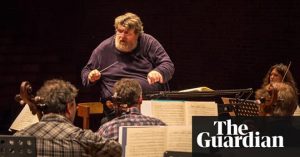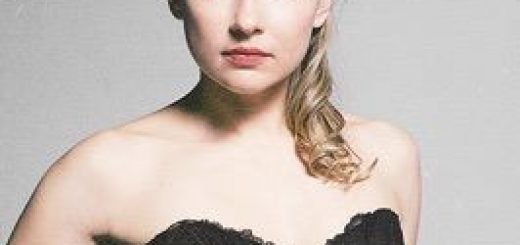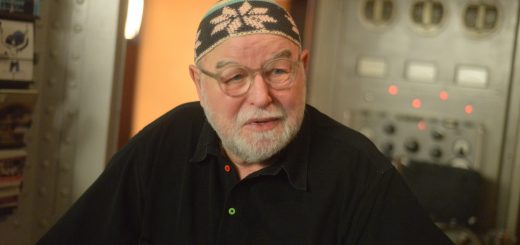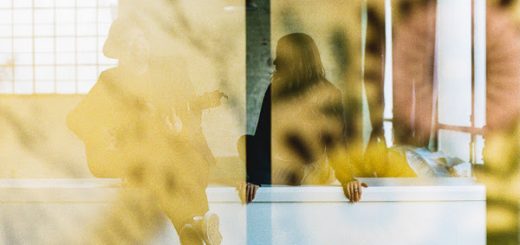Oliver Knussen
THE GARDIAN .COM

Stuart Oliver Knussen CBE (12 June 1952 – 8 July 2018) was a British composerand conductor.
Biography[edit]
Oliver Knussen was born in Glasgow, Scotland. His father, Stuart Knussen, was principal double bass of the London Symphony Orchestra, and also participated in a number of premieres of Benjamin Britten‘s music.[1] Oliver Knussen studied composition with John Lambert between 1963 and 1969, and also received encouragement from Britten. He spent several summers studying with Gunther Schuller at Tanglewood in Massachusetts and in Boston.[2] He later became the head of contemporary music activities at Tanglewood, between 1986 and 1993.
He was married to Sue Knussen, a US-born producer and director of music programmes for BBC television and for the UK’s Channel 4 – for which she made Leaving Home, an introduction to 20th-century music presented by Simon Rattle in a series of seven one-hour programmes, which won the 1996 BAFTA award for “Best Arts Series”.[3] She ran the Los Angeles Philharmonic‘s education department in the late 1990s. Oliver and Sue Knussen had a daughter, Sonya Knussen, who is a mezzo-soprano. Sue Knussen died of a blood infection in London in 2003. The Sue Knussen Composers Fund (previously, the Sue Knussen Commissioning Fund) “honours her memory and professional legacy…and…commissions works from emerging composers to be performed by contemporary music ensembles worldwide.”[4]
Knussen lived in Snape, Suffolk, Benjamin Britten’s base during one of his most creative periods.[5] Snape Maltingsconcert hall is the home of the Aldeburgh Festival. Knussen died on 8 July 2018, aged 66.[6]
Musical life[edit]
Though Knussen began composing at about the age of six; an ITV programme about his father’s work with the London Symphony Orchestra prompted the commissioning for his first symphony (1966–1967). Aged 15, Knussen stepped in to conduct his symphony’s première at the Royal Festival Hall, London, on 7 April 1968, after István Kertész fell ill. After his debut, Daniel Barenboim asked him to conduct the work’s first two movements in New York a week later.[7] In this work and his Concerto for Orchestra (1968–1970), he had quickly and fluently absorbed the influences of modernist composers Britten and Berg as well as many mid-century (largely American) symphonists, while displaying an unusual flair for pacing and orchestration.[2] It was as early as the Second Symphony (1970–1971), in the words of Julian Anderson, that “Knussen’s compositional personality abruptly appeared, fully formed”.[8]He was awarded CBE in the 1994 Birthday Honours.[9]
Knussen was principal guest conductor of The Hague‘s Het Residentie Orkest (Residentie Orchestra) between 1992 and 1996, the Aldeburgh Festival’s co-artistic director between 1983 and 1998 and the London Sinfonietta‘s music director between 1998 and 2002 – and became that ensemble’s conductor laureate.
In 2005 Knussen was the music director of the Ojai Music Festival.
From September 2006, Knussen was artist-in-association to the Birmingham Contemporary Music Group, and from 2009 to the BBC Symphony Orchestra.
His major works from the 1980s were his two children’s operas, Where the Wild Things Are and Higglety Pigglety Pop!, both libretti by Maurice Sendak – and based on Sendak’s own eponymous children’s books.[10] Where the Wild Things Are received its New York premiere in November 1986 by New York City Opera, which also performed the work in April 2011.
Knussen wrote his Songs for Sue, a setting of four poems for soprano and 15-piece ensemble, as a memorial tribute to his late wife, and the music received its world première in Chicago in 2006. Knussen told Tom Service in The Guardian:[11]
I knew there were a number of Dickinson poems addressed to her sister, Sue, so one week I read all 1,700 poems of Emily Dickinson … and I copied out about 35 of them by hand, I have no idea where the notes for this piece come from … It seemed to want to be written … I wasn’t sure whether it … ought to be let out at all … because I didn’t want it to be a self-indulgent thing. But actually it’s very restrained. It’s not a huge work – about 13 minutes – but it’s a big piece emotionally.
As of autumn 2012, Knussen was writing a symphonic adagio for the Philadelphia Orchestra. He was also planning to finish two concertos that he had worked on for several years: one for piano and one for cello.[12]
His recordings as a conductor included works by Modest Mussorgsky, Ruth Crawford Seeger, Elliott Carter, Igor Stravinsky, Colin Matthews, Alexander Goehr, Robin Holloway and Poul Ruders.
Compositions[edit]
- Symphony No. 1, Op. 1 (1967–68), for orchestra (withdrawn)
- Processionals, Op. 2 (1968/78), for chamber ensemble
- Masks, Op. 3 (1969), for solo flute and glass chimes ‘ad lib’
- Concerto for Orchestra (1969)
- Symphony in One Movement, Op. 5 (1969/2002), for orchestra – a revised version of the “Concerto for Orchestra”
- Hums and Songs of Winnie-the-Pooh, Op. 6 (1970/83), for soprano solo, flute, cor anglais, clarinet, percussion and cello
- Three Little Fantasies, Op. 6a (1970/83), for wind quintet
- Symphony No. 2, Op. 7 (1970–71), for high soprano and chamber orchestra [winner: Margaret Grant Prize, Tanglewood]
- Choral, Op. 8 (1970–72), for wind, percussion and double basses
- Rosary Songs, Op. 9 (1972), for soprano solo, clarinet, piano and viola
- Océan de Terre, Op. 10 (1972–73/76), for soprano and chamber ensemble
- Music for a Puppet Court (after John Lloyd), Op. 11 (1973/83), “puzzle pieces” for two chamber orchestras
- Trumpets, Op. 12 (1975), for soprano and three clarinets
- Ophelia Dances, Op. 13 (1975), for flute, cor anglais, clarinet, horn, piano, celesta and string trio [Koussevitzky centennial commission]
- Autumnal, Op. 14 (1976–77), for violin and piano
- Cantata Op. 15 (1977), for oboe and string trio
- Sonya’s Lullaby Op. 16 (1978–79), for piano solo
- Scriabin Settings (1978)
- Coursing, Op. 17 (1979), for large chamber ensemble
- Symphony No. 3, Op. 18 (1973–79), for orchestra
- Frammenti da Chiara, Op.19a (1975/86), for two antiphonal ‘a cappella’ female choirs
- Where the Wild Things Are, Op. 20 (1979–83), fantasy opera, libretto by Maurice Sendak
- Songs and a Sea Interlude, Op. 20a (1979–81), for soprano and orchestra
- The Wild Rumpus, Op. 20b (1983), for orchestra
- Higglety Pigglety Pop!, Op. 21 (1984–85, revised 1999), fantasy opera, libretto by Maurice Sendak
- Fanfares for Tanglewood (1986), for thirteen brass and three groups of percussion
- The Way to Castle Yonder, Op. 21a (1988–90), for orchestra
- Flourish with Fireworks, Op. 22 (1988 revised 1993), for orchestra
- Four Late Poems and an Epigram of Rilke, Op. 23 (1988), soprano solo
- Variations, Op. 24 (1989), for piano solo
- Secret Psalm (1990), for violin solo
- Whitman Settings, Op. 25 (1991), for soprano and piano
- Whitman Settings, Op. 25a (1992), for soprano and orchestra
- Songs without Voices, Op. 26 (1991–92), for flute, cor anglais, clarinet, horn, piano and string trio
- Elegiac Arabesques (in memory of Andrzej Panufnik), Op. 26a (1991), for cor anglais and clarinet
- Two Organa, Op. 27 (1994), for large chamber ensemble
- Horn Concerto, Op. 28 (1994), for horn solo and orchestra
- “…upon one note” (fantasia after Purcell) (1995), for clarinet, piano and string trio
- Prayer Bell Sketch (in memory of Tōru Takemitsu), Op. 29 (1997), for piano solo
- Eccentric Melody (for Elliott Carter‘s 90th birthday) (1998), for cello solo
- Violin Concerto, Op. 30 (2002), for violin solo and orchestra
- Ophelia’s Last Dance, Op. 32 (2004/2009–10), for piano solo
- Requiem: Songs for Sue, Op. 33 (2005–6), for soprano and chamber ensemble
- Reflection, for violin and piano (2016)
- O Hototogisu! (fragment of a Japonisme), for soprano, flute and large ensemble (2017)
References[edit]
- Jump up^ Reed, Philip & Mervyn Cooke. Letters from a Life: The Selected Letters of Benjamin Britten, 1913–1976: Vol. 5: 1958–1965. Boydell Press, 2010: p. xxxviii
- ^ Jump up to:a b Julian Anderson. “Knussen, Oliver”. In L. Root, Deane. Grove Music Online. Oxford Music Online. Oxford University Press. (subscription required)
- Jump up^ “Sue Knussen” obituary, Variety, 16 April 2003. Accessed 19 August 2007.
- Jump up^ “Singsthings”[permanent dead link], Sonya Knussen’s website. Accessed 19 August 2007.
- Jump up^ “Benjamin Britten’s long association…” – John Waddell Archived 8 March 2005 at the Wayback Machine., snapevillage.org.uk. Accessed 19 August 2007.
- Jump up^ Obituary, The Guardian. Retrieved 10 July 2018
- Jump up^ Bayan Northcott, “Oliver Knussen”], The Musical Times, Vol. 120, No. 1639. (September 1979), pp. 729–732
- Jump up^ Anderson, Julian, “The later Music of Oliver Knussen. Catching up with Knussen in his 40th Year”‘, The Musical Times, Vol. 133, No. 1794. (August 1992), pp. 393–394.
- Jump up^ “No. 53696”. The London Gazette (Supplement). 10 June 1994. p. 9.
- Jump up^ “Oliver Knussen interview”, Classic CD, February 1999. Accessed 19 August 2007.
- Jump up^ “I had to write it” – G2 section, The Guardian, London, 19 October 2006. Accessed 20 August 2007.
- Jump up^ Swed, Mark (7 October 2012). “Oliver Knussen knows the monsters well”. Los Angeles Times. p. 2.
External links[edit]
- CompositionToday – Knussen article, review and interview
- Knussen biography at the website of his publisher Faber Music
- Birmingham Contemporary Music Group website
- Notes on Symphony No. 3 by Thomas May
- Two Interviews with Oliver Knussen by Bruce Duffie, December 17, 1988 & March 13, 1998
| Cultural offices | ||
|---|---|---|
| Preceded by Markus Stenz |
Music Director, London Sinfonietta 1998–2002 |
Succeeded by no successor |
- 1952 births
- 2018 deaths
- People from Glasgow
- People educated at Purcell School
- Pupils of Olivier Messiaen
- British male classical composers
- 20th-century Scottish musicians
- Scottish conductors (music)
- Commanders of the Order of the British Empire
- 20th-century classical composers
- 21st-century classical composers
- Deutsche Grammophon artists
- Honorary Members of the Royal Academy of Music
- Honorary Members of the Royal Philharmonic Society


